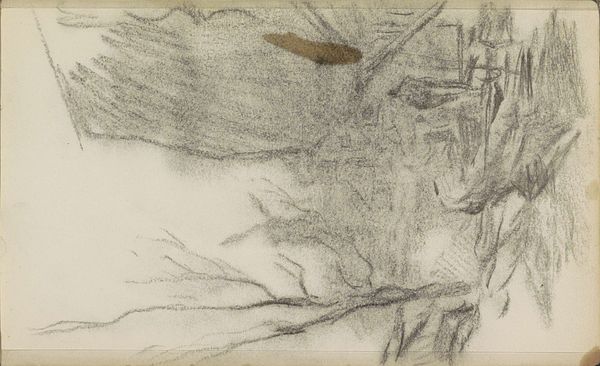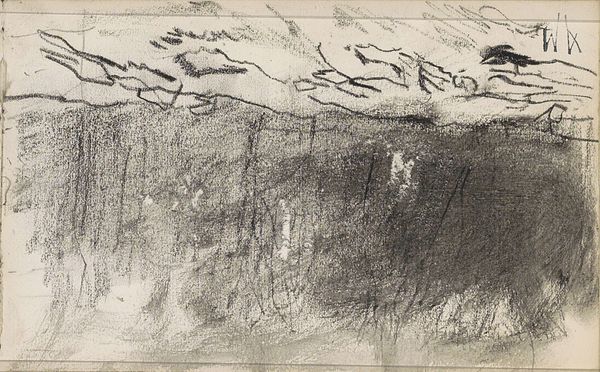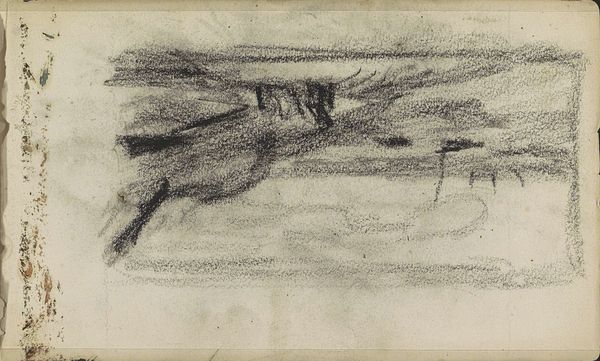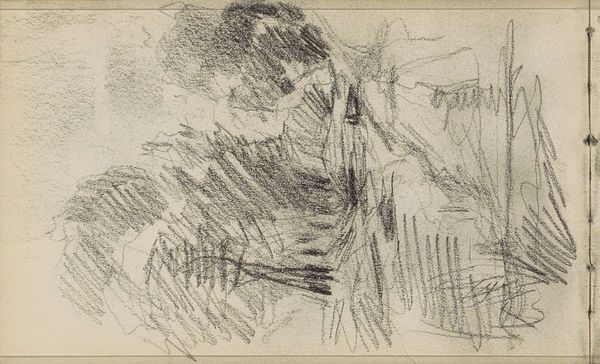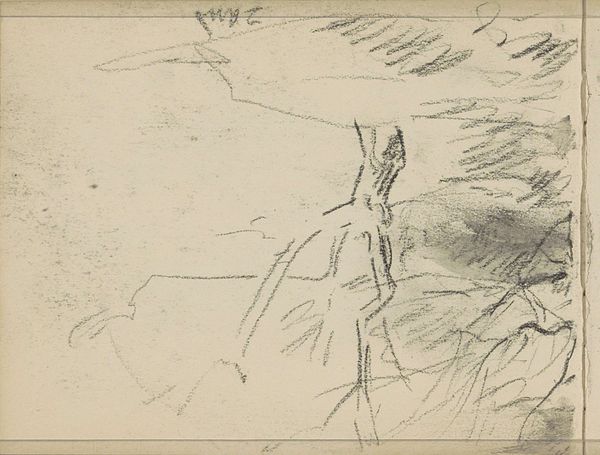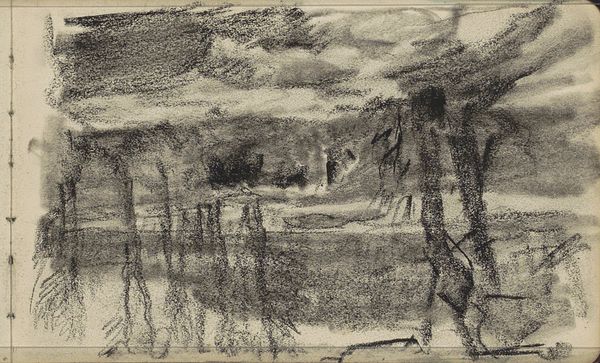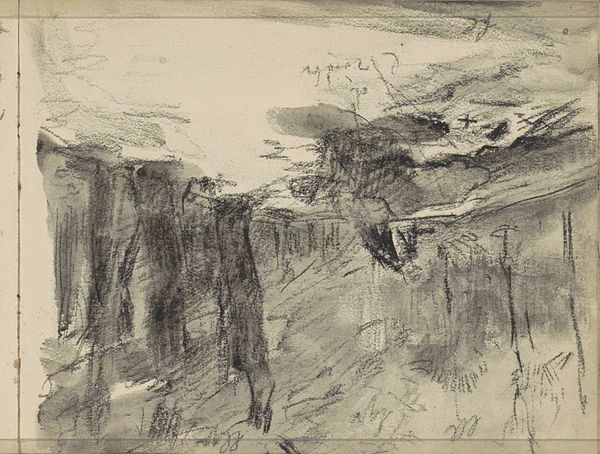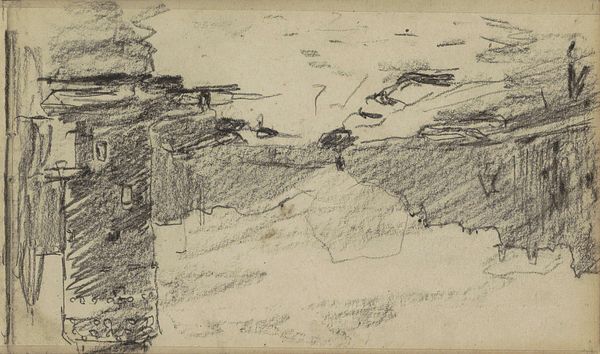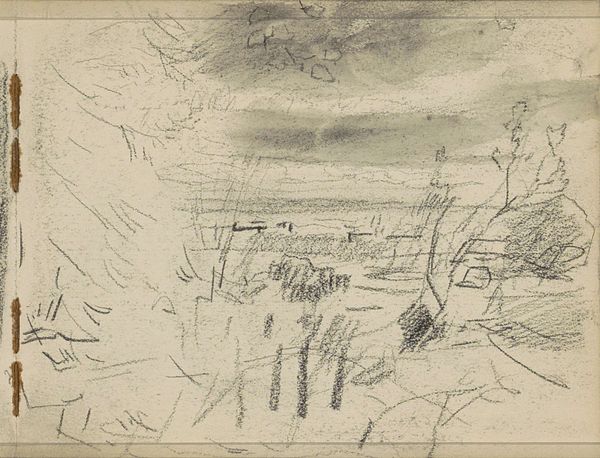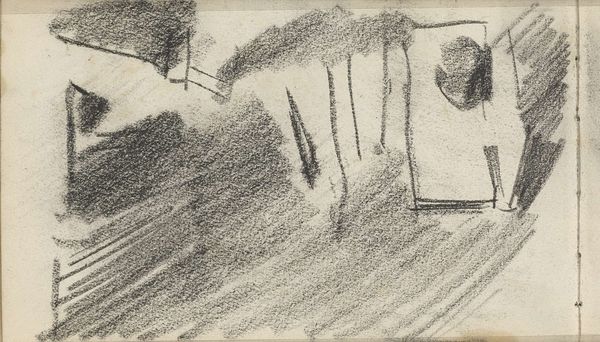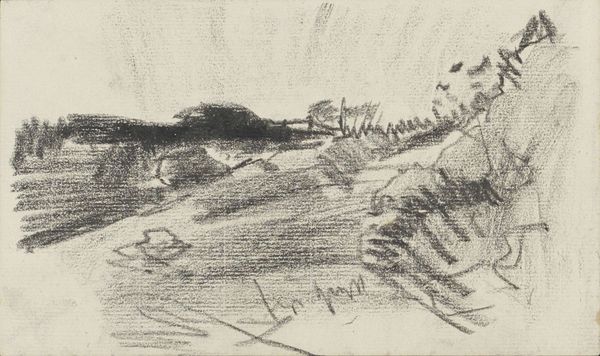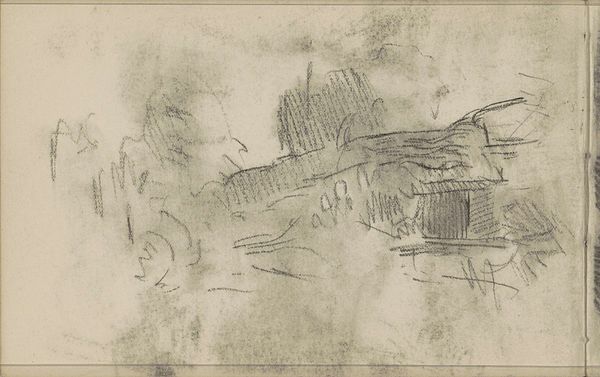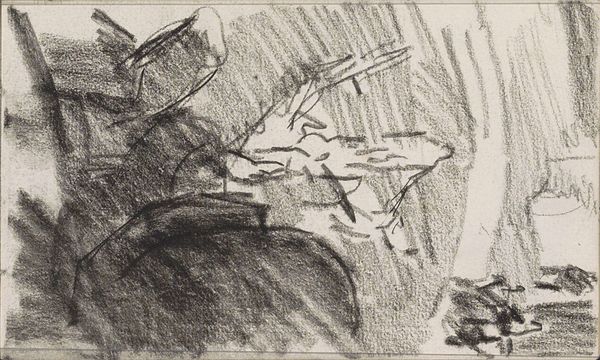
Copyright: Rijks Museum: Open Domain
Curator: Before us we have "Landschap met water," or "Landscape with Water," a pencil drawing attributed to Johan Antonie de Jonge, likely created sometime between 1901 and 1927. Editor: My first impression is of subdued, almost melancholic energy. The pencil strokes are restless, evoking a landscape in flux. I’m particularly drawn to the tonal range, creating depth without the use of colour. Curator: The composition presents a compelling structural tension between the dark, dense thicket on the left and the open expanse of the water on the right. Notice how the artist uses a delicate touch to render the reflections on the water's surface, contrasting with the heavier lines that define the trees and foliage. Editor: Yes, and I wonder about the source of that heavy contrast, how De Jonge's access to materials and the socio-economic landscape of the early 20th century impacted his choices. Was pencil readily available, or was its use a deliberate decision linked to cost or artistic expression given societal resources? How was this drawing meant to function within the broader economy of art and artistic labour at the time? Curator: That’s a fascinating line of inquiry. I see the overall composition functioning through the arrangement of visual elements like line, value, and shape, working in harmony to create a sense of depth and atmosphere. There's a noticeable emphasis on capturing a fleeting moment in nature, aligning with Impressionistic sensibilities even with this restricted medium. Editor: Absolutely. From a materialist standpoint, I see this drawing not just as a representation of a landscape, but as evidence of the artist's labor, choices in available resources and artistic creation. The immediacy of the pencil marks reveal the artist's direct engagement with his surroundings. Curator: An apt reminder that behind every aesthetic decision, lies a human action. Considering the artwork's historical placement, we recognize De Jonge's work as an evocative expression of a changing world through an immediate application of artistry. Editor: Indeed, a world mediated by materials, processes, and, ultimately, the hand of the artist—elements inextricably linked to the final aesthetic form.
Comments
No comments
Be the first to comment and join the conversation on the ultimate creative platform.
